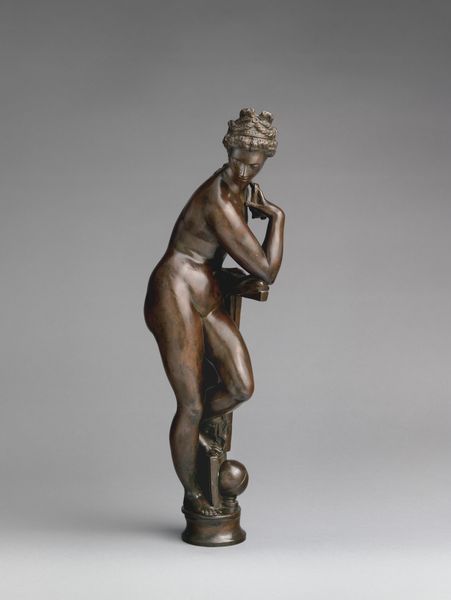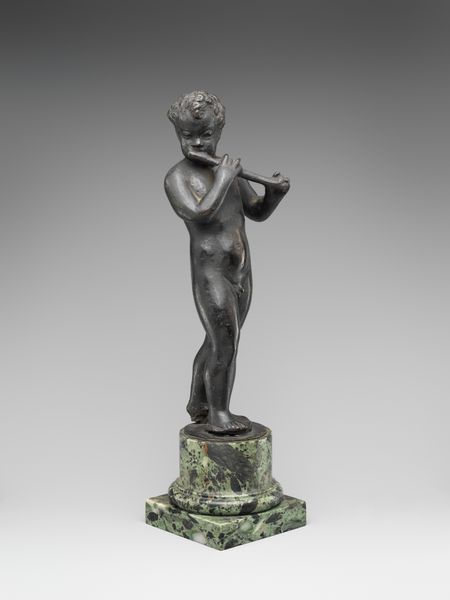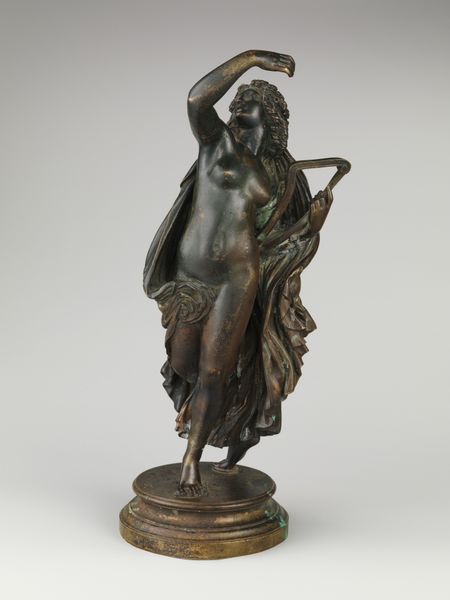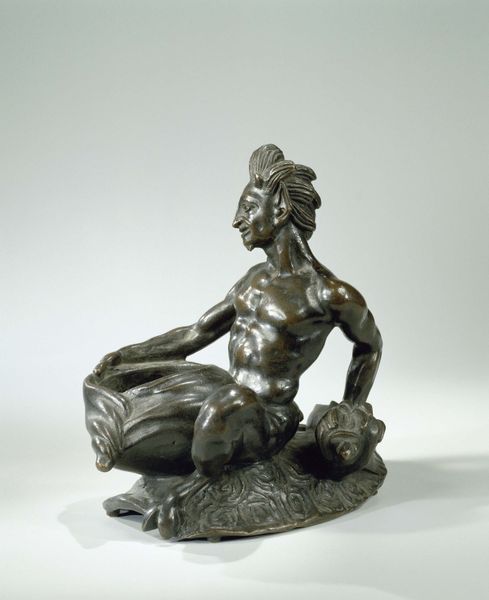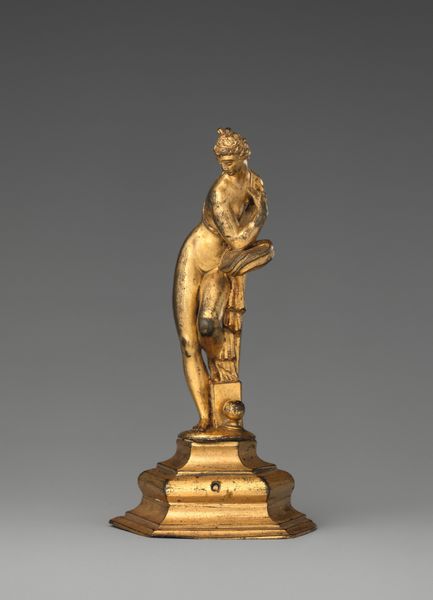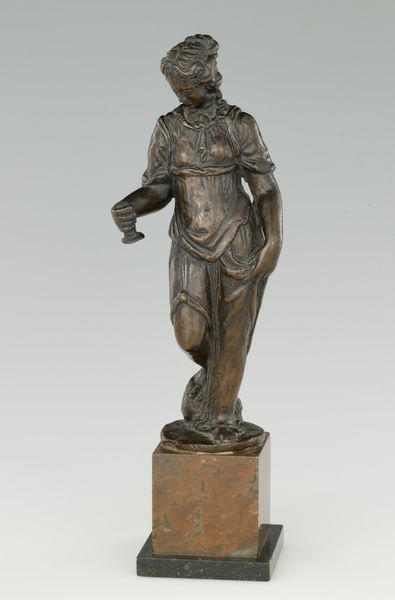
bronze, sculpture
#
baroque
#
bronze
#
figuration
#
female-nude
#
sculpture
#
decorative-art
#
nude
Dimensions: Overall (confirmed): 13 × 3 5/8 × 4 in. (33 × 9.2 × 10.2 cm)
Copyright: Public Domain
Curator: Before us, we have a small bronze sculpture entitled “Bathing Venus,” dating back to the 17th or 18th century. It is currently held at The Metropolitan Museum of Art. Editor: The mood strikes me immediately—reserved, even hesitant. There’s a certain vulnerability about her stance that I find disarming. What is your first reaction? Curator: The defining characteristic for me is its meticulous anatomical rendering within a clear pyramidal organization, typical of Baroque sculpture. Consider the exquisite details – the cascading drapery, the intricate hair – that build toward the graceful tilt of her head. Editor: The drape of fabric she clutches so close makes me consider historical narratives around female objectification and idealised beauty standards within a patriarchal lens. Her beauty seems almost weaponized against herself, doesn’t it? Curator: Perhaps. But it’s also a technical tour de force. Notice how Giambologna uses contrapposto to generate dynamism in the figure – a subtle spiral that animates the form. Editor: Dynamism achieved by turning the female form into an object of spectacle. This piece embodies that precise historical moment, yet also reinforces contemporary discussions around how power dictates these aesthetic choices, shaping female experiences in subtle yet lasting ways. Is she an ideal, or a reflection of societal constraint? Curator: I believe it represents a harmony of form and function— the beauty inherent in technical mastery – the pure delight of beholding aesthetic accomplishment within classical conventions. Editor: Ultimately, I see it as a reminder—beautiful as it is, it forces the viewer to reckon with complex social power structures that determine value and identity, now just as in centuries past.
Comments
No comments
Be the first to comment and join the conversation on the ultimate creative platform.

